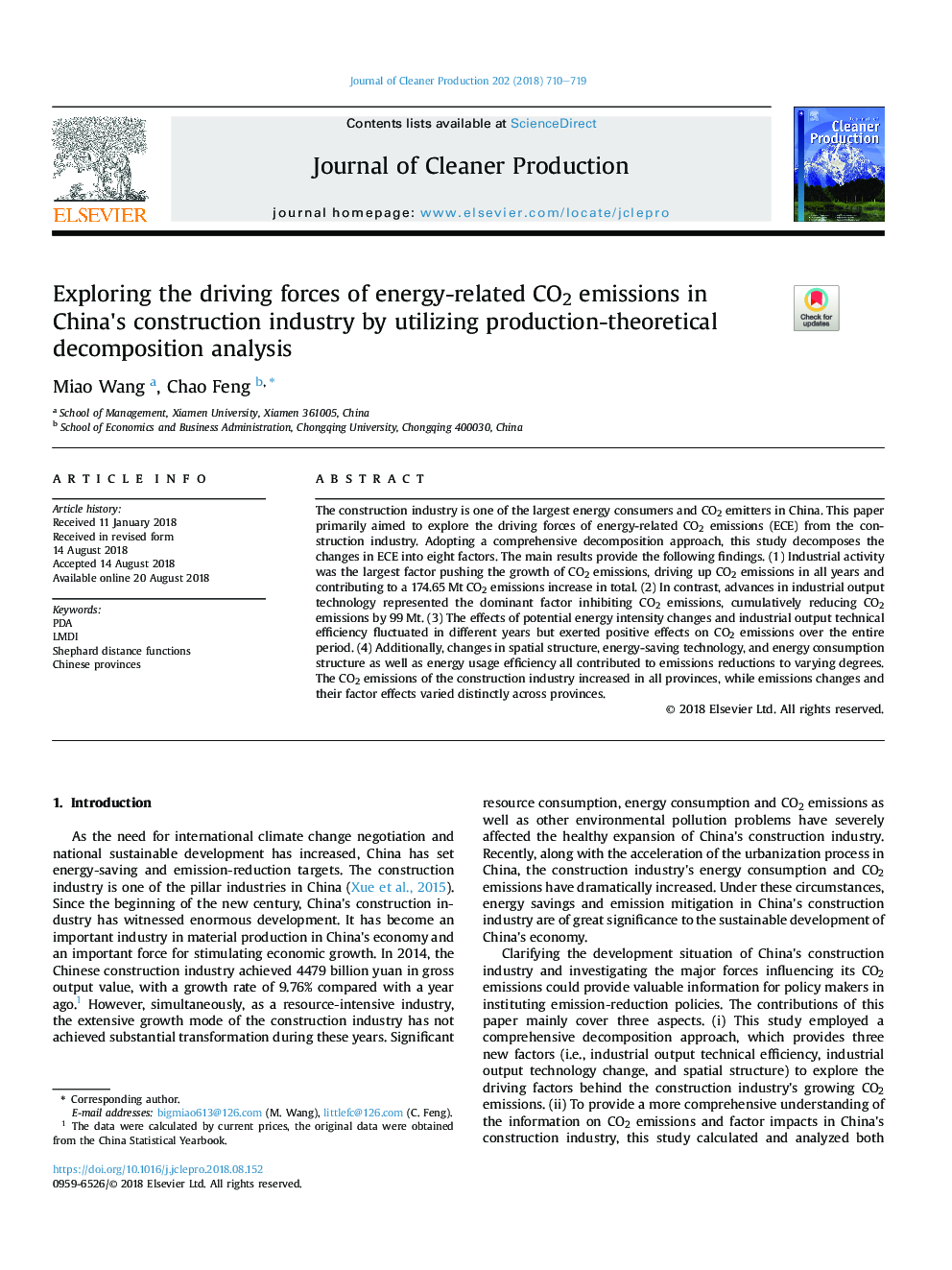| Article ID | Journal | Published Year | Pages | File Type |
|---|---|---|---|---|
| 8948851 | Journal of Cleaner Production | 2018 | 10 Pages |
Abstract
The construction industry is one of the largest energy consumers and CO2 emitters in China. This paper primarily aimed to explore the driving forces of energy-related CO2 emissions (ECE) from the construction industry. Adopting a comprehensive decomposition approach, this study decomposes the changes in ECE into eight factors. The main results provide the following findings. (1) Industrial activity was the largest factor pushing the growth of CO2 emissions, driving up CO2 emissions in all years and contributing to a 174.65â¯Mt CO2 emissions increase in total. (2) In contrast, advances in industrial output technology represented the dominant factor inhibiting CO2 emissions, cumulatively reducing CO2 emissions by 99â¯Mt. (3) The effects of potential energy intensity changes and industrial output technical efficiency fluctuated in different years but exerted positive effects on CO2 emissions over the entire period. (4) Additionally, changes in spatial structure, energy-saving technology, and energy consumption structure as well as energy usage efficiency all contributed to emissions reductions to varying degrees. The CO2 emissions of the construction industry increased in all provinces, while emissions changes and their factor effects varied distinctly across provinces.
Keywords
Related Topics
Physical Sciences and Engineering
Energy
Renewable Energy, Sustainability and the Environment
Authors
Miao Wang, Chao Feng,
